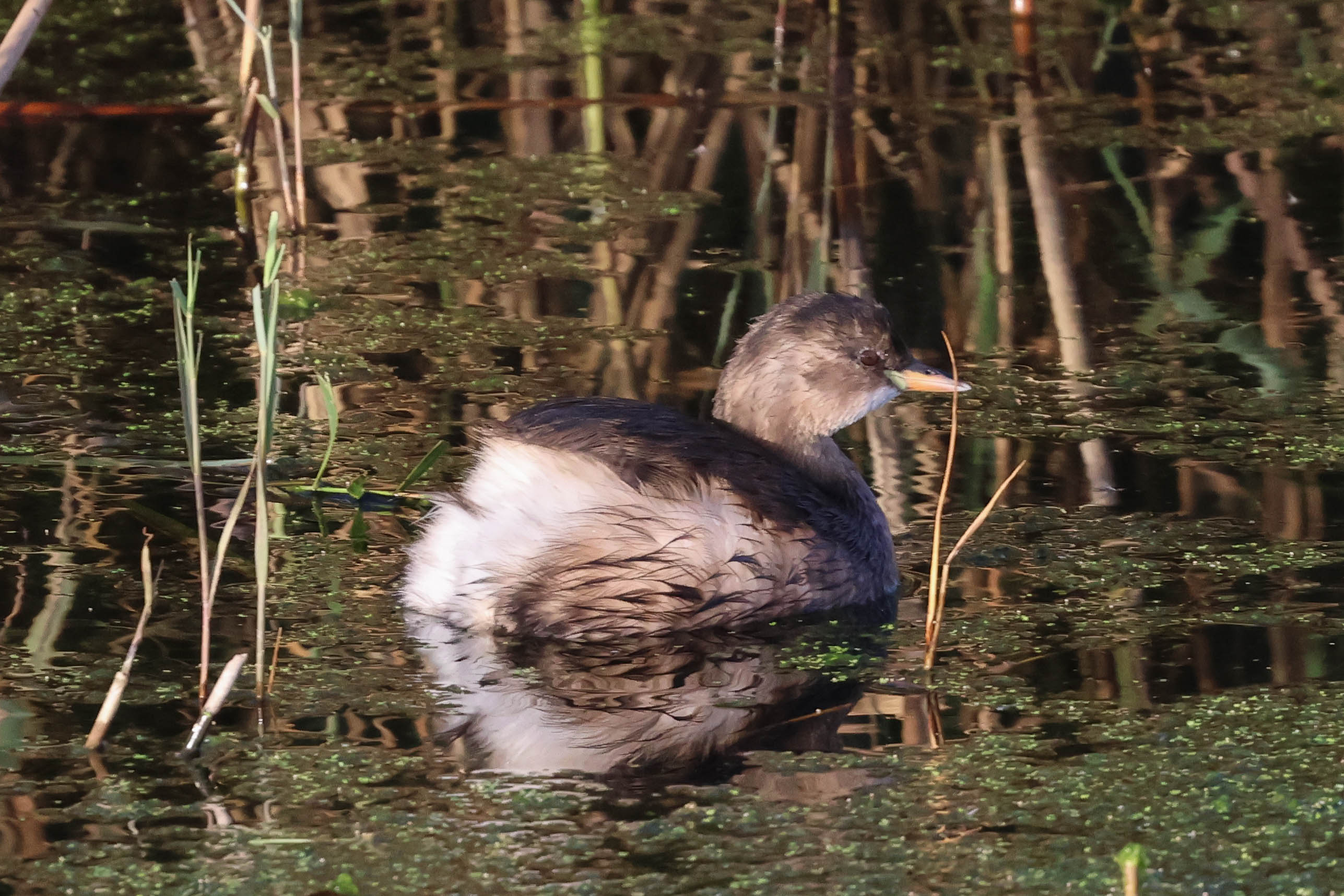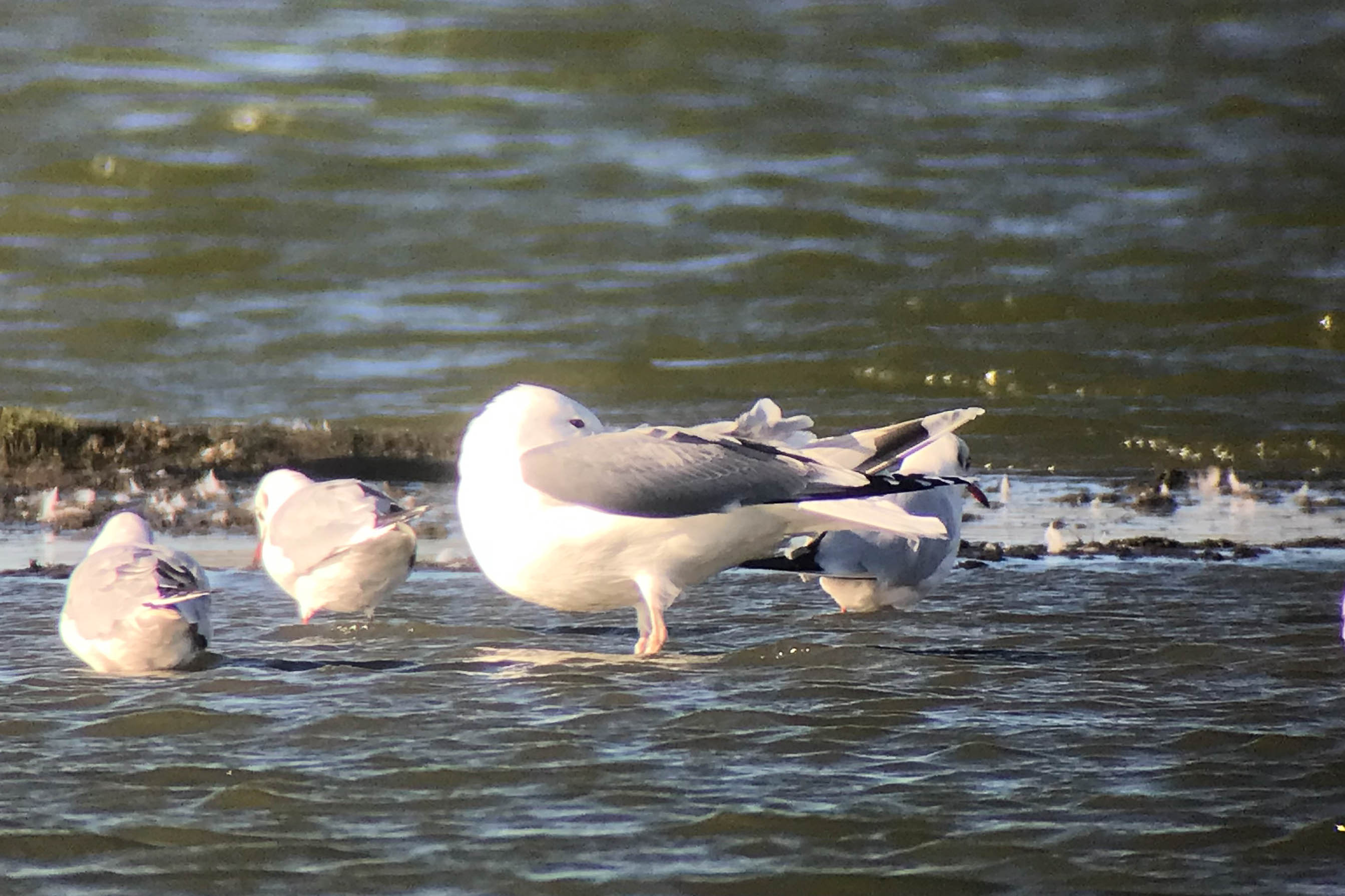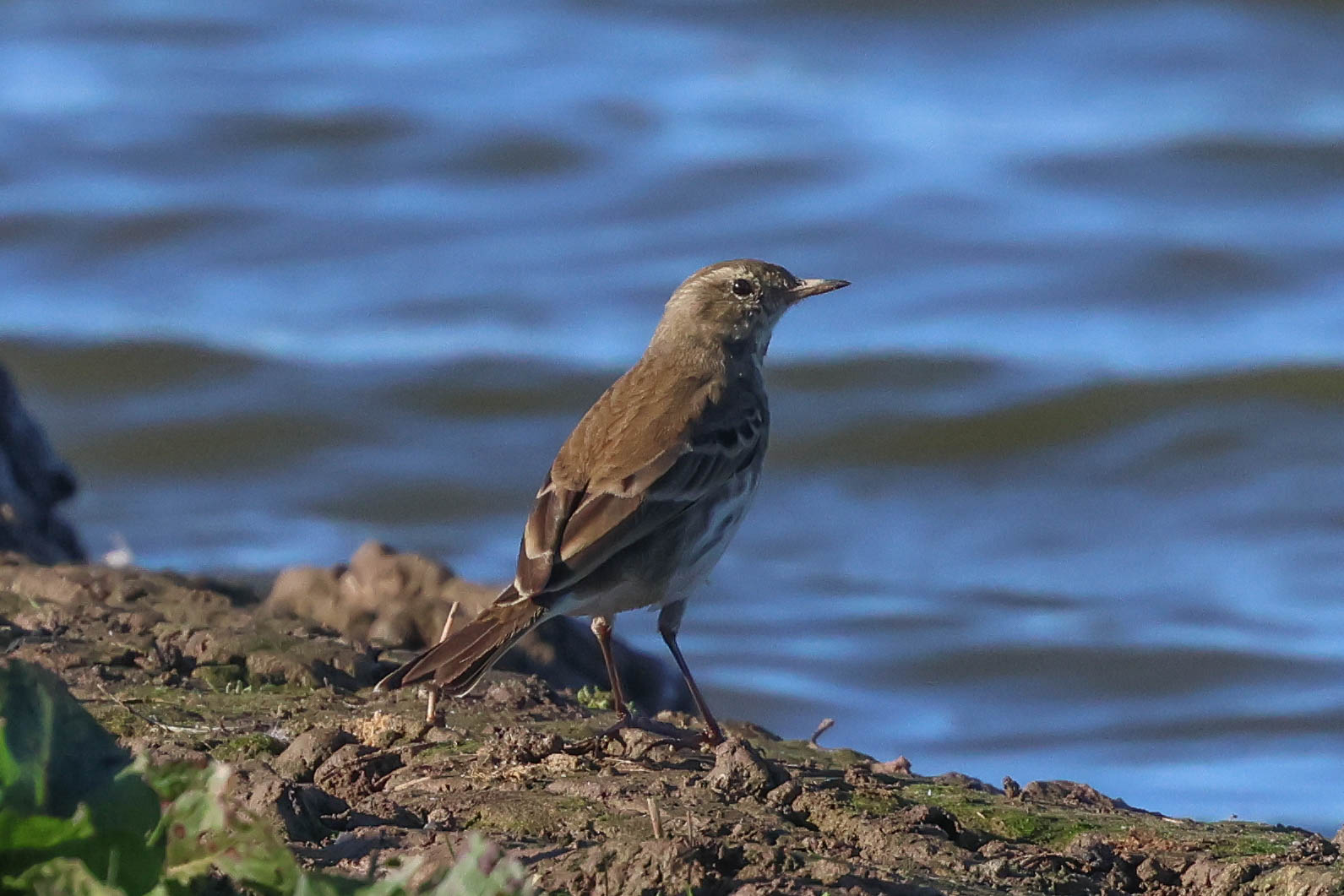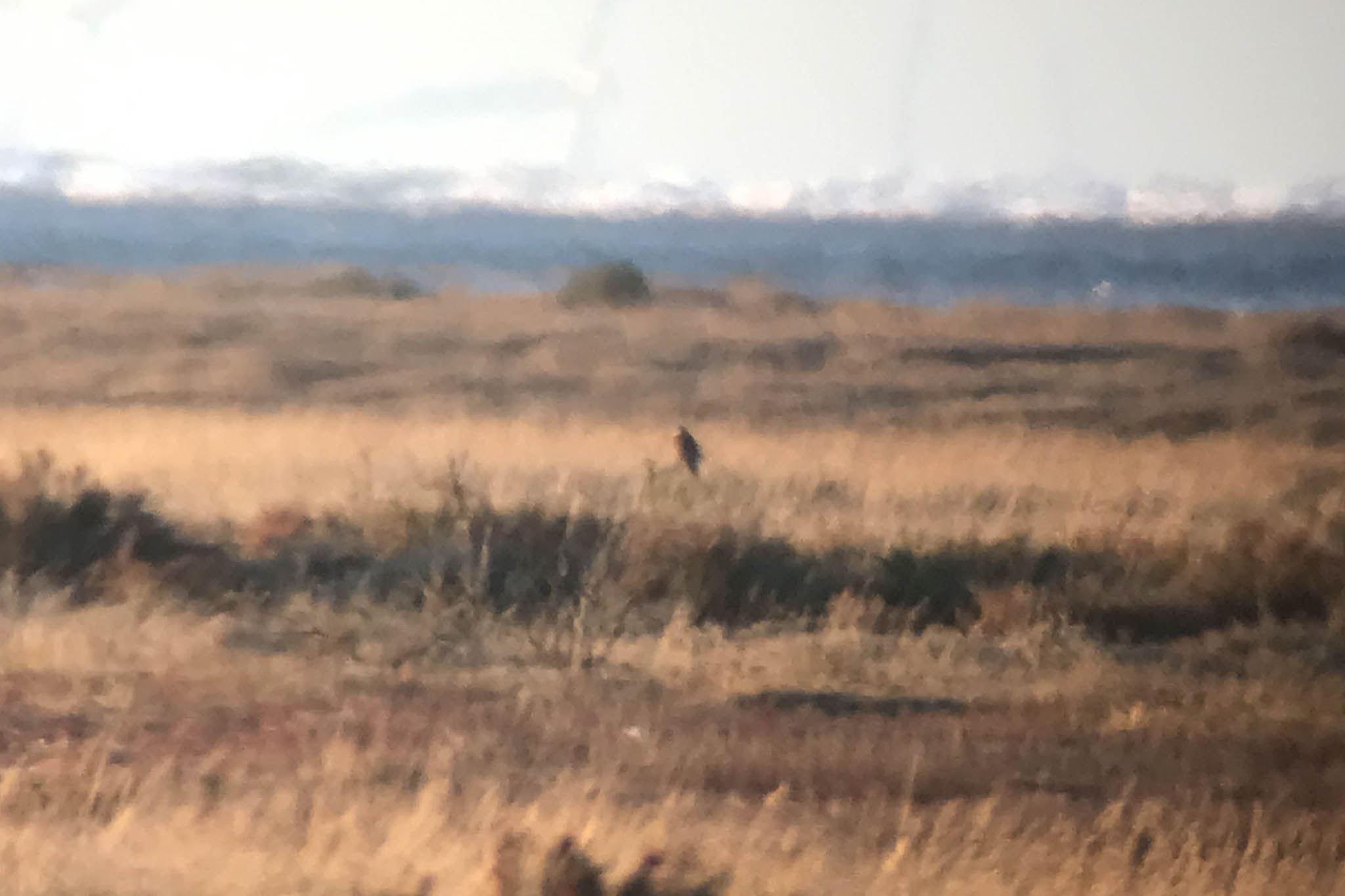Day 1 of a three day Late Autumn Tour. After a cold start, it was a lovely day – bright, sunny, with lots of clear skies, although with a rather cold NNW wind. We set out to make the most of the good weather.
Our destination for the morning was Cley. We parked at Walsey Hills and had a quick scan of Snipe’s Marsh. There was no sign of any Jack Snipe today, but we did see Pied Wagtail and Robin and a Jay flying across at the back.
From up on the East Bank, we stopped to scan the pools. There were three Little Grebes, a Gadwall, Coot and Moorhen on Don’s Pool today. A Water Rail flapped across the corner and disappeared into the reeds at the far end.

We could hear Bearded Tits calling, but they didn’t show themselves – it was probably a bit windy this morning. We heard several Cetti’s Warblers shouting too, but they remained typically hidden. A couple of Reed Buntings flew round and there was a trickle of finches on the move – a few Chaffinches and a couple of Greenfinches flew through heading west.
A couple of small groups of Pink-footed Geese flew over calling, and a larger flock dropped down in the middle towards the hides. When all the birds flushed off the scrapes, we looked over to see a Peregrine flying over and watched it head off inland. A Marsh Harrier circled over the reeds, and another flew up out of Pope’s reedbed the other side and in over Pope’s Pool flushing everything.
We stopped at the south end of the Serpentine to scan. There were lots of Wigeon and Teal along the far edge. Several Black-tailed Godwits were feeding in the water, and a small group of Dunlin on the small pool in the wet grass.
Some of the group were walking on ahead when we noticed another wader close to the bank at the north end of the Serpentine, the Long-billed Dowitcher. We had been planning to go round to the Iron Road to look for it later this morning, but it does sometimes get here on the Serpentine too. It is often much closer here, so we got the scope on it and had some great views. Rather like a dumpy grey snipe, we could see its plain-centred tertials and long bill with slightly drooping tip. It has been here for over 2 weeks now – it will be interesting to see just how long it stays.

After watching the Long-billed Dowitcher for a bit, we continued on to the shelter overlooking Arnold’s Marsh. It was nice in here to get out of the wind. We had only just started scanning when we noticed a small, dark waders on one of the shingle islands – a Purple Sandpiper, not something we usually see here. They spend the winter on rocky coasts, typically here on coastal sea defences, but they are just arriving now and can sometimes turn up elsewhere. A nice bonus!
There were also several Grey Plover, Oystercatcher, Redshanks and Curlews on Arnold’s. A small group of Cormorants and a couple of Great Black-backed Gulls were on the larger island towards the back. A lone juvenile Brent Goose was feeding on the saltmarsh off to the side, presumably having been separated from its family. A female Stonechat flicked up onto the top of the suaeda in front of the old shingle ridge.
A scan of the Brackish Pools behind revealed two Pintail upending on the water. Lots of Shoveler were dozing around the edges.
There had been some skuas and a couple of Little Auks reported past Cley beach earlier, blown in by the brisk wind, so we made our way out to the beach for a look. There were several Red-throated Divers offshore, but they were not always easy to see in the swell. Several small groups of Razorbills on the sea were slightly more obliging. More Razorbills flew past, along with one or two Guillemots but we couldn’t see any other auks now. A steady succession of Gannets passed by too.
There was wildfowl moving this morning too – we saw several flocks of Wigeon and Teal coming in over the sea, and a few lines of Brent Geese, all arriving here for the winter. A lone Sanderling, a Turnstone and a few Dunlin flew past too. We watched several Skylarks coming in off the sea, and a Rock Pipit flew west along beach, presumably also fresh in.

We hadn’t been out on the beach too long when someone kindly came over to tell us there was a Snow Bunting on the old shingle ridge just a short distance away. We walked straight over, and had some great views of it feeding on the weedy vegetation growing out of the shingle in the sunshine.
We decided to head back and try somewhere else now. Three Marsh Harriers circled together close to the path out over the reedbed now. A gaggle of Canada Geese on the grazing marsh were an addition to the day’s list.

There have been some Shorelarks at Salthouse in recent days, but they have been very mobile. They had been reported west of Salthouse beach this morning, so we went round there to look, but by the time we got there it appeared they had flown off. We could see some people we knew along the beach to the east, so while we tried to find out where they had gone, we had a quick look out to sea. Offshore passage seemed to have slowed, although there were still a few Razorbills and Gannets moving.
The Shorelarks had apparently flown off west, so we decided to make our way back to Cley, and have a quick look on the reserve before lunch. We made our way out to Bishop Hide. There were lots of ducks on Pat’s Pool – Wigeon, Teal and Shoveler. In amongst them, we found several Ruff. A Little Stint flew in and landed on the closest island, giving us really good views as it worked its way around the edge feeding. Another Little Stint appeared a bit further back, along with a couple of Dunlin.

We managed to find a Common Snipe on the far bank, amongst the ducks and several Lapwing but it flew and we lost sight of it. Another Lapwing dropped in on the bank right in front of the hide.

There were several gulls loafing on one of the islands, mainly Black-headed Gulls but accompanied by a few larger gulls. There were several Herring Gulls and we could see a couple of Lesser Black-backed Gulls too, but one sleeping gull caught our eye. It was very white headed, and appeared to have a dark beady eye and rather spindly fleshy legs.
We had a good idea it was an adult Caspian Gull and then it shifted and we could see the pattern of the underside of the far wing – a long white tip, a narrower black bar and then extensive whitish inner web. A characteristic of adult Caspian Gull.

Eventually the Caspian Gull did wake up and flashed its long and rather parallel-sided bill.
A Water Pipit called, and dropped down to land on the bank right in front of the hide. It only stayed for a minute or so, looking round nervously, then flew again. It landed on the bank to the right of the scrape but walked straight down into the reeds on the edge of the mud and disappeared. An amazingly productive hour here!

We made our way back to the Visitor Centre for lunch. A couple of Marsh Harriers drifted over the reedbed and across the scrape, flushing everything. A flock of Golden Plover towered up over us, twisting and turning over the fields behind. A Common Buzzard flew over the picnic tables and a Sparrowhawk came in high over the reedbed and circled up inland. A flock of House Sparrows came out of the bushes by the road and shot over to the far side of the car park.
After lunch, we headed back to Salthouse, this time parking in the village and walking back to the Iron Road. Some people were leaving just as we arrived and said there had been no sign of the Long-billed Dowitcher, though thankfully we had enjoyed such good views of it earlier we were not especially worried. It seemed to be our lucky day for it though and we had just arrived at the gate when the Dowitcher walked out from behind the grass right on the front edge of the pool. We had actually been hoping for a Jack Snipe here, but all we could find on the back edge at the moment were several Common Snipe. It was probably still a bit early.
The Shorelarks had been seen again, while we were having lunch, but had flown south from the beach at the north end of the Iron Road. We checked out the field opposite the pool, where they had been frequenting a couple of days earlier. There were lots of Linnets and a few Skylarks, but no other larks here now. The Lapland Bunting appeared from the dense vegetation briefly, but immediately disappeared back in and we couldn’t find it again.
We wanted to have a look at the harrier roost to end the day, so we drove west now to Stiffkey. A Merlin was perched on a distant low suaeda bush when we arrived and got out of the minibus. There was a bit of haze this evening, and a distant dark bird on the shingle ridge beyond the saltmarsh turned out to be a rather dark juvenile Peregrine when it eventually took off. It set off in pursuit after a Woodcock, presumably a tired migrant just arrived in off the North Sea, quickly caught it in midair, then turned and flew with it out to the beach and disappeared from view.

There were several Marsh Harriers out over the saltmarsh, but the Hen Harriers were slow to come in tonight, probably because the weather was so nice. We did eventually see a ghostly grey male Hen Harrier distant towards Wells briefly, which was still out hunting rather than coming in to roost. A Barn Owl was more obliging, flying right past us over the near edge of the saltmarsh. It was getting dark, so we decided to call it a night. As we started to drive back towards the main road, another Barn Owl flew across in front of us and we watched as it worked its way off over the field the other side.
















